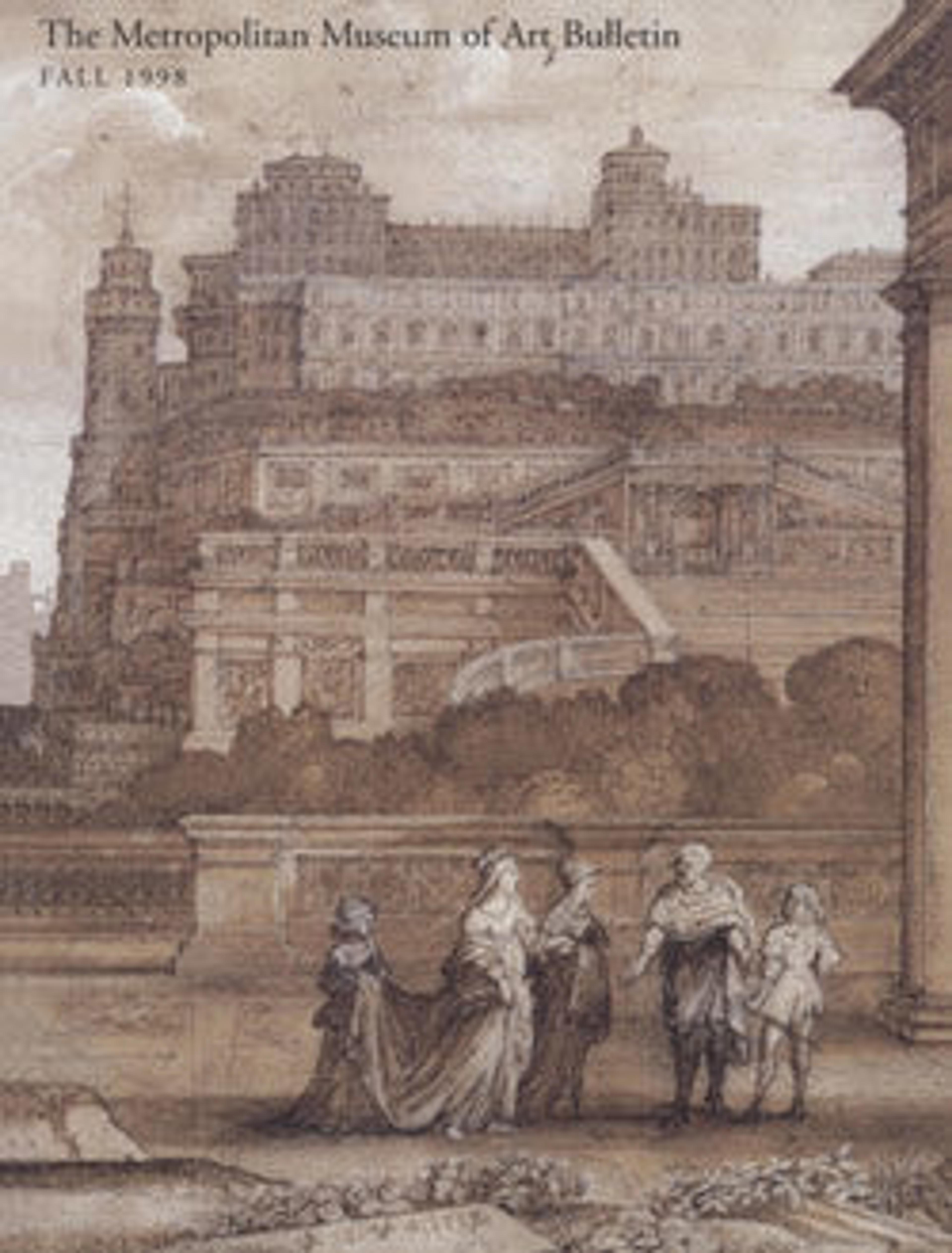Habit à la disposition
The shimmering silk has been embroidered à la disposition, that is, following the contours dictated by the projected application, and is ready to be cut and sewn into a gown and petticoat. Two side skirt panels (a detail of one is pictured), a single petticoat panel, and a length of yardage for the skirt back, bodice, and sleeves are all sumptuously worked with silk floss accented by tiny silver sequins to depict meticulously arranged ivory ribbon swags and abstract floral sprays in pinks and greens.
Although clients could specify colors, applied decoration, and styling, more often a dressmaking workshop would provide a variety of already embroidered panels from which the customer could select. Needlework designs, often adapted from pattern books, were transferred to the textile by pouncing, dusting over a pricked cartoon to leave dotted guidelines. The resulting dots were traced with ink for permanence during working.
The open robe and petticoat-heavily embellished with trimmings, a stomacher front panel, and lace accessories-was the dominant form of dress for women in the eighteenth century. Because of the sumptuousness of the silk and the formality of the embroidery, these panels were probably meant for a robe à la française, the expansive and flowing back and skirts of which would be an excellent vehicle for the embroiderer's art.
Although clients could specify colors, applied decoration, and styling, more often a dressmaking workshop would provide a variety of already embroidered panels from which the customer could select. Needlework designs, often adapted from pattern books, were transferred to the textile by pouncing, dusting over a pricked cartoon to leave dotted guidelines. The resulting dots were traced with ink for permanence during working.
The open robe and petticoat-heavily embellished with trimmings, a stomacher front panel, and lace accessories-was the dominant form of dress for women in the eighteenth century. Because of the sumptuousness of the silk and the formality of the embroidery, these panels were probably meant for a robe à la française, the expansive and flowing back and skirts of which would be an excellent vehicle for the embroiderer's art.
Artwork Details
- Title:Habit à la disposition
- Date:1780–90
- Culture:Italian
- Medium:silk
- Credit Line:Purchase, Fletcher Fund by exchange and Irene Lewisohn Trust Gift, 1998
- Object Number:1998.191a–d
- Curatorial Department: The Costume Institute
More Artwork
Research Resources
The Met provides unparalleled resources for research and welcomes an international community of students and scholars. The Met's Open Access API is where creators and researchers can connect to the The Met collection. Open Access data and public domain images are available for unrestricted commercial and noncommercial use without permission or fee.
To request images under copyright and other restrictions, please use this Image Request form.
Feedback
We continue to research and examine historical and cultural context for objects in The Met collection. If you have comments or questions about this object record, please contact us using the form below. The Museum looks forward to receiving your comments.
